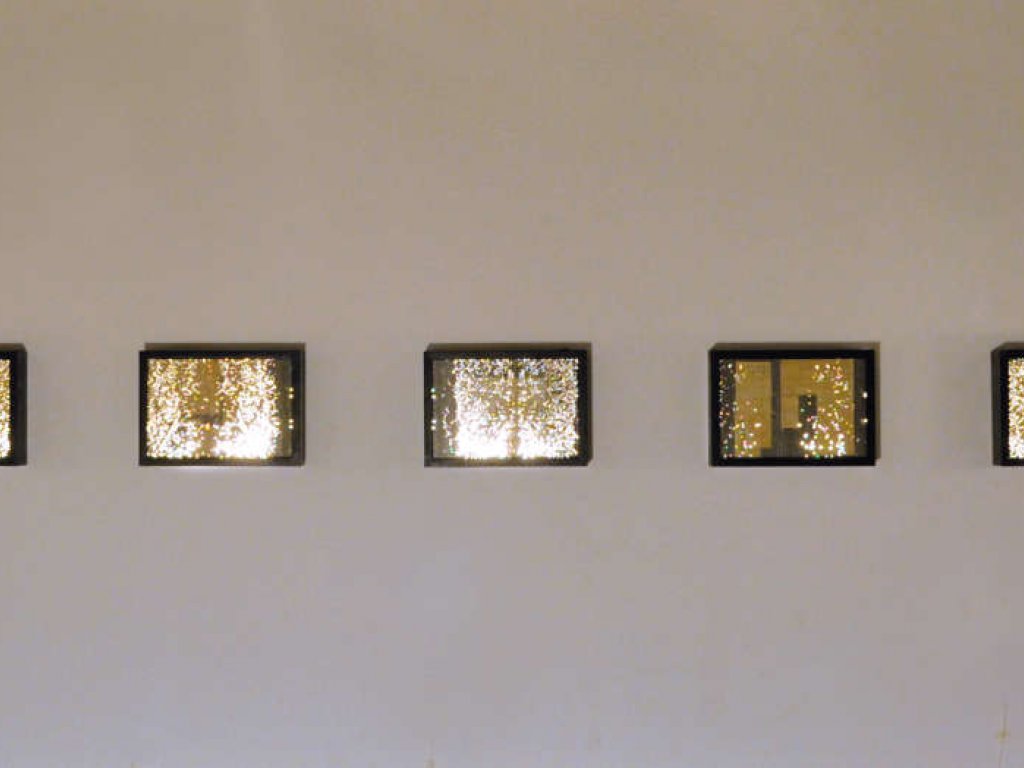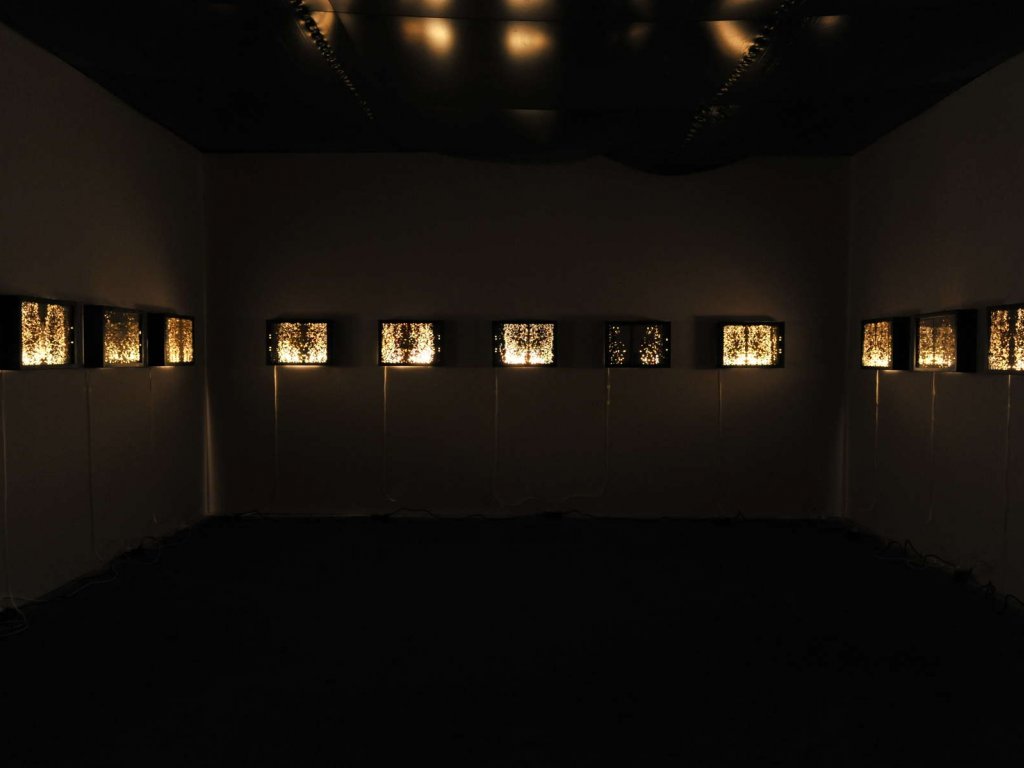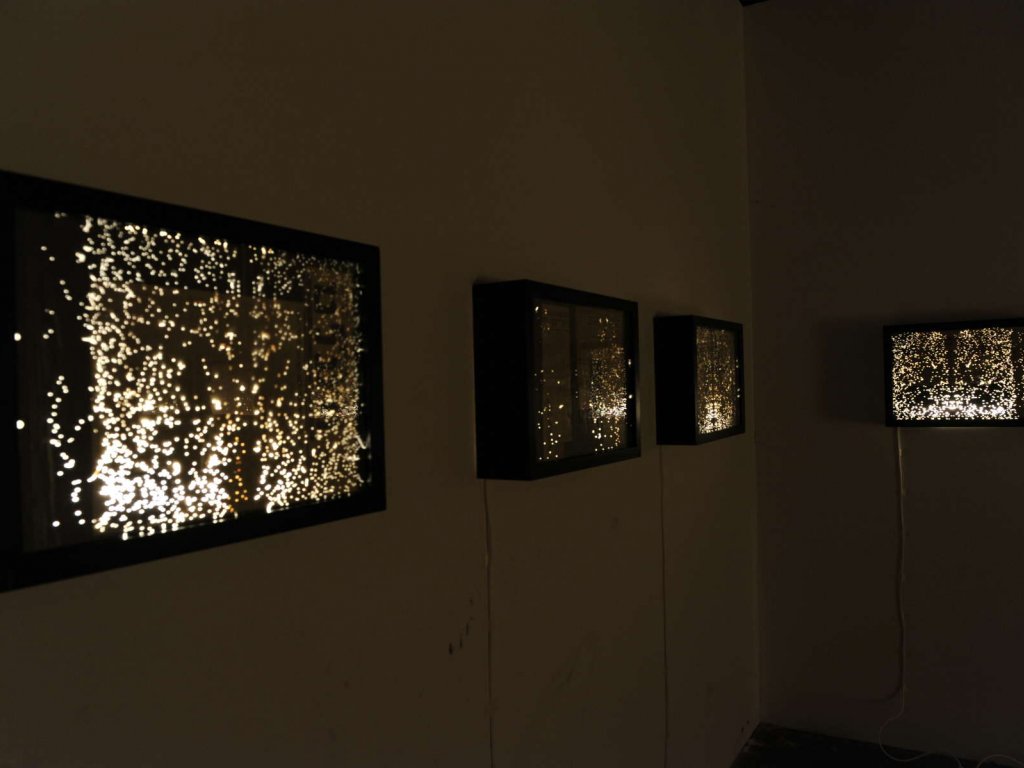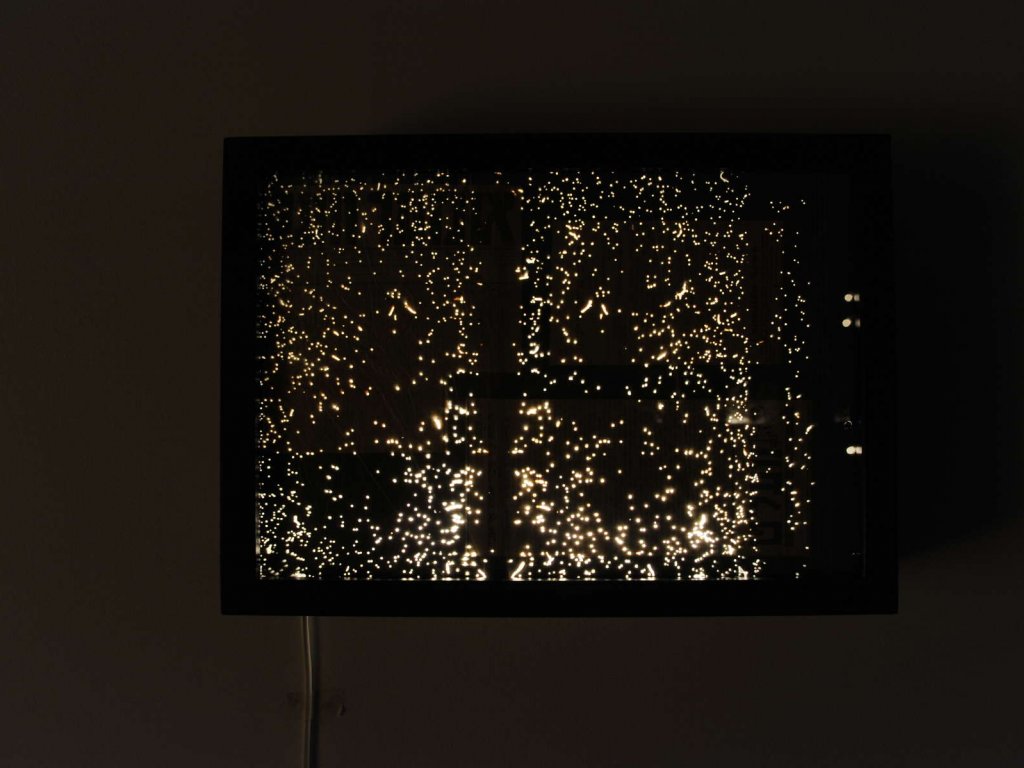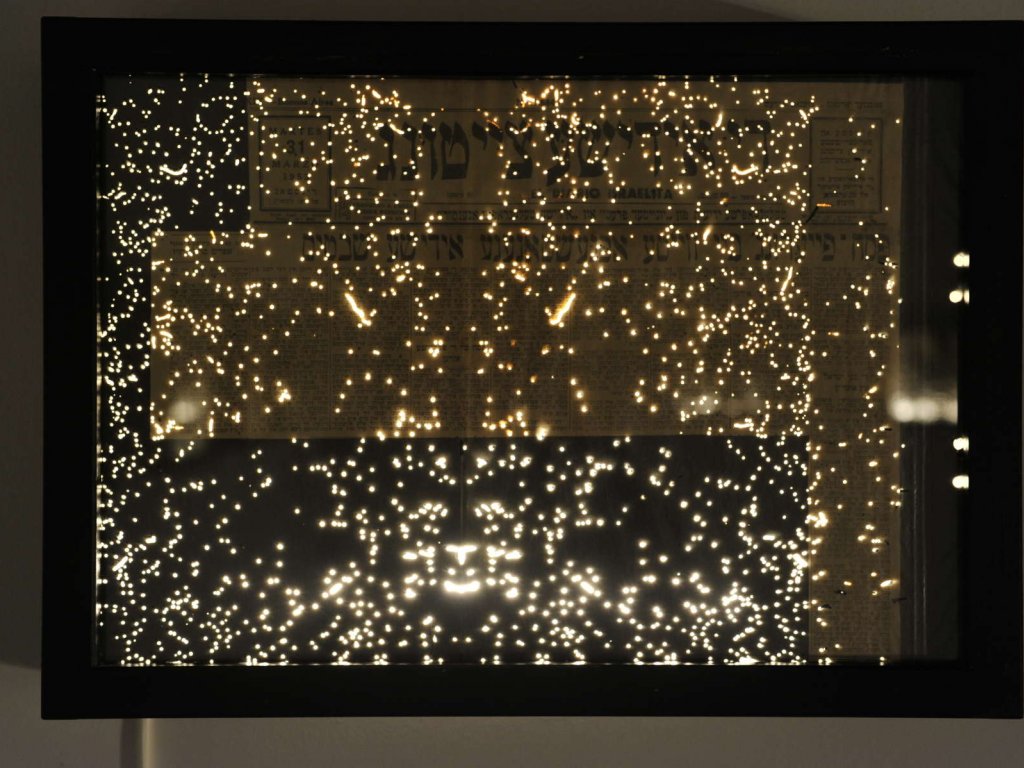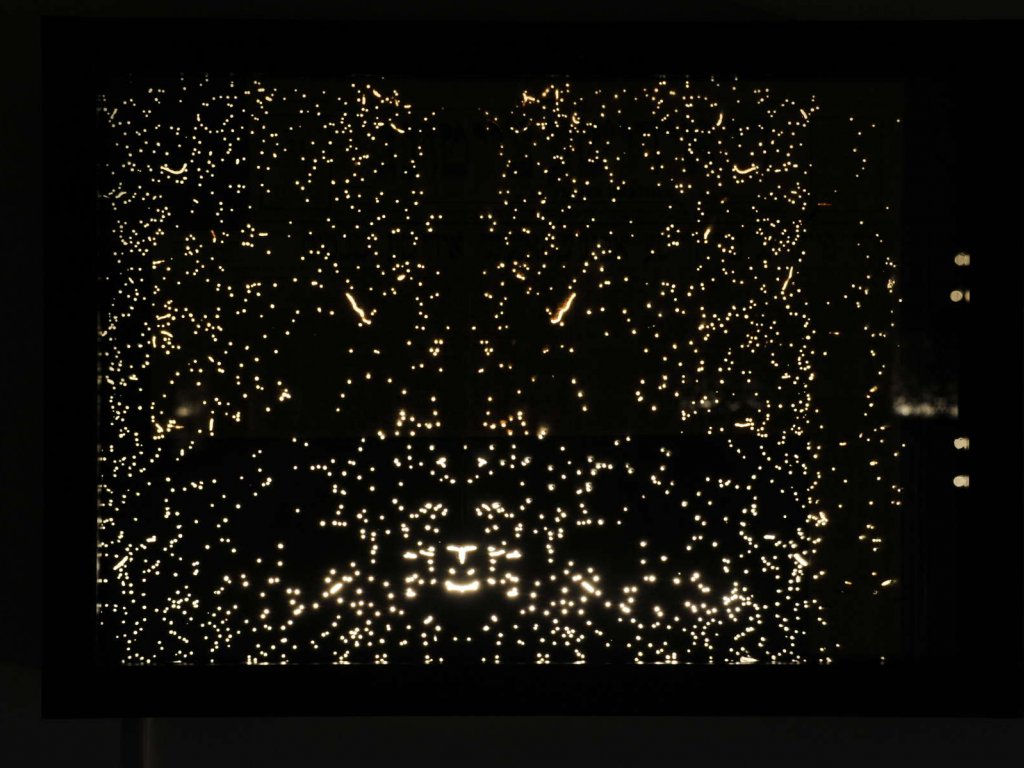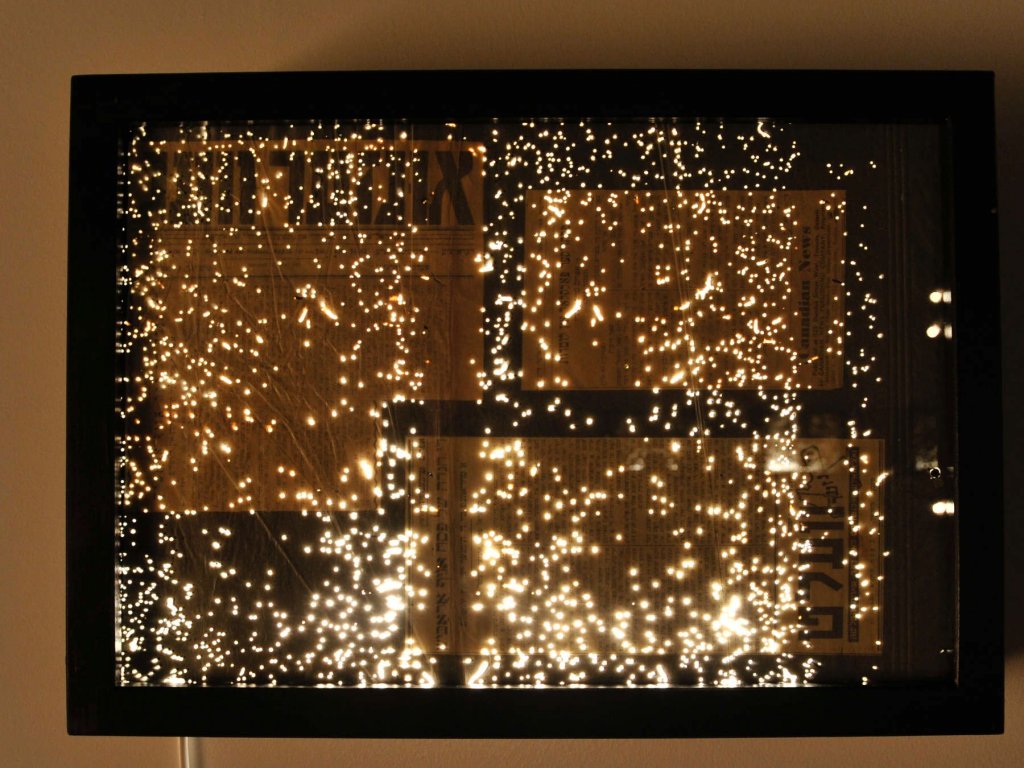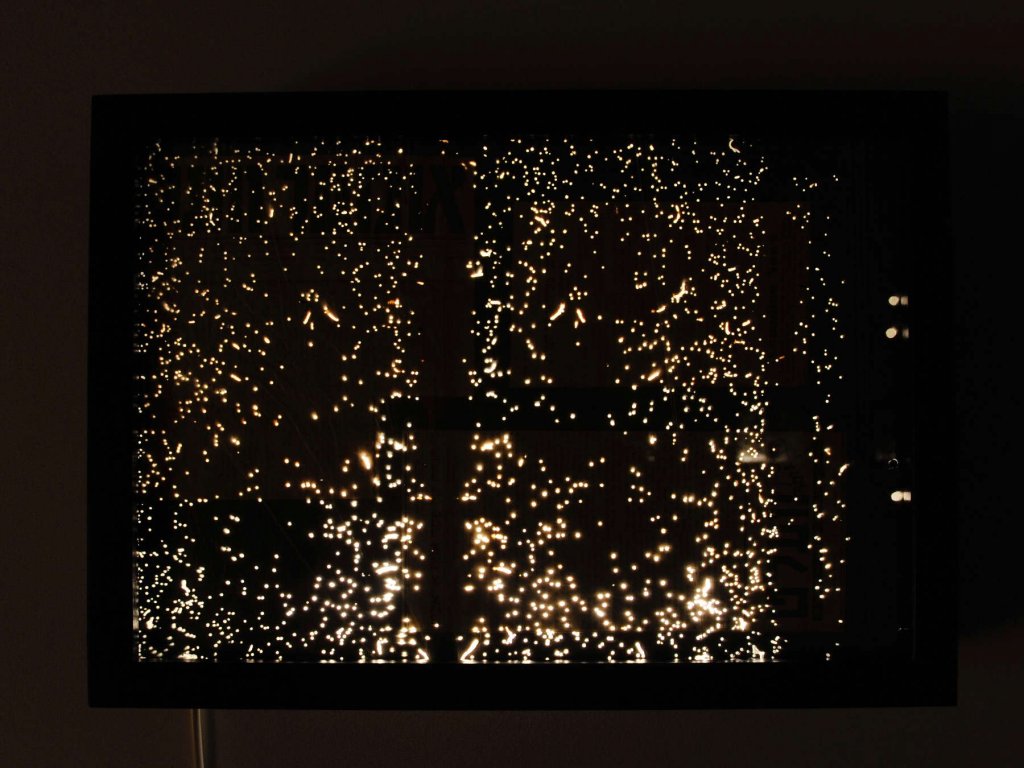Astrolabium
Bremen / Haifa 2012
Fifteen light boxes, seemingly depicting telescopic photographs of far-away galaxies, are accompanied by an audio track recalling the sounds of a summer night: young lovers whispering poems in Yiddish to one another, the singing of crickets, and a klezmerized version of the “Imperial March,” the famous title track from the movie Star Wars, can be heard drifting in and out from a distance.
Upon closer inspection, these pictures of galaxies reveal them- selves to be pointillist drawings: the holes prove to be the traces of the common house borer, also known as anobium punctatum. In countless effort, this insect has drawn, on the pages of an unknown person’s carefully compiled archives of columns from various Yiddish newspapers from the 1950s. The archive pages had been set aside and passed on over decades, until they, by way of detour through Canada, made the journey from Tel Aviv to Bremen, where they became a part of the work Astrolabium (Astrolabe).
An astrolabe is a device which measures the distance between stars and the horizon. A transgression can be found at the base of the piece Astrolabium (Astrolabe): instead of showing a tangible product of human creativity, holes made by insects are made visible. The holes stand for the holes that are created in history through the destruction of archives. Archives save data and facts, but life and its stories are missing. These holes are to be filled in with stories. In the figurative sense, the archive experiences a metamorphosis through its destruction. Expressed differently, astronomical objects are created through making the holes visible. The time span between generations and the consequential loss of detail in the passing on of stories can be measured in these stars.
